What’s in a Nug? A Visual Guide to the Anatomy of Craft THCA Flower
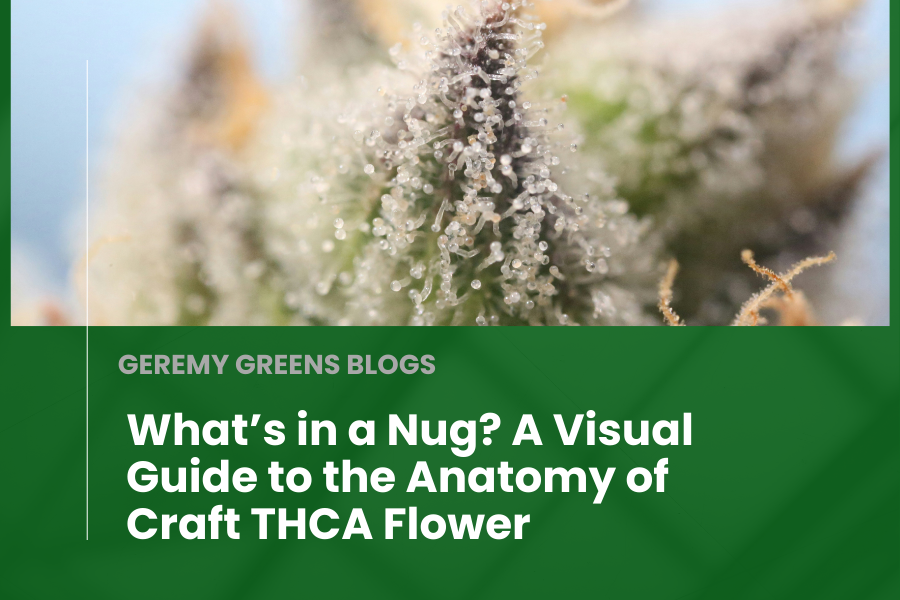
You know a good nug when you see one—frosty, loud, and begging to be smoked. But have you ever wondered what you're actually looking at?
Every part of a cannabis bud tells a story about how it was grown, how it was cured, and how it might hit. Whether you're a first-time buyer or a seasoned connoisseur, learning the parts of the nug helps you shop smarter and smoke better.
Let’s break it down—from trichomes to calyxes—with this visual guide to the anatomy of premium THCA flower.
🌱 1. Trichomes: The Frost That Does the Heavy Lifting
What they are:
Tiny, crystal-like glands covering the surface of the bud.
Why they matter:
Trichomes are where THCA, terpenes, and minor cannabinoids live. The more intact, cloudy, and sticky the trichomes, the more potent and flavorful the bud is likely to be.
Quality tip:
Milky-white trichomes = mature and potent. Clear = undercured. Amber = aged or oxidized.
🔥 2. Pistils: The Fiery Hairs That Catch Your Eye
What they are:
The red, orange, or rust-colored hairs you see curling out of the nug.
Why they matter:
Pistils are part of the flower’s reproductive system—but to you, they’re an age and maturity signal. During peak harvest, these hairs change from white to deep color tones.
Quality tip:
Too many bright white pistils? It might’ve been harvested early. Mostly orange or red? You're in the sweet spot.
🔒 3. Calyxes: The Nug’s Building Blocks
What they are:
Small, teardrop-shaped structures that form the bud itself. They surround the seeds in unfertilized (aka smokable) flower.
Why they matter:
Calyxes determine density, shape, and weight. Chunky, dense calyxes are usually a sign of slow-grown, healthy flower.
Quality tip:
Look for buds with swollen, well-formed calyxes—not flat or leafy formations.
🧬 4. Sugar Leaves: The Frosty Outskirts
What they are:
Small, trichome-covered leaves poking out from the nug.
Why they matter:
They carry some cannabinoids and terpenes, but not as much as the calyxes. In premium flower, they’re often hand-trimmed back to focus on the good stuff.
Quality tip:
A clean trim (hand-trimmed, not machine-shaved) means care was taken in processing.
👁 5. Color, Density, and Nose: The Bonus Signals
While not anatomical parts, color, weight, and aroma are still critical:
-
Color: Rich greens, purples, and deep orange hues signal good genetics
-
Density: Tight, weighty buds are more potent than airy ones
-
Aroma: Loud and layered scent = strong terpene presence and good cure
So, What Makes a Nug “Craft”?
At Geremy Greens Farm, we grow in small batches and pay attention to every detail—from trichome development to pistil color. Each jar tells the story of how we grew it, trimmed it, cured it, and protected it with proper storage (yes, even humidity packs).
We don’t chase inflated THCA numbers—we grow true, full-spectrum flower that checks every visual and sensory box.
Final Thought:
You don’t need a lab coat to tell good flower from mid.
Just look a little closer—your nug has nothing to hide.
No comments
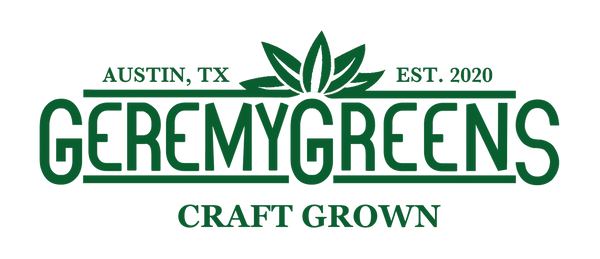


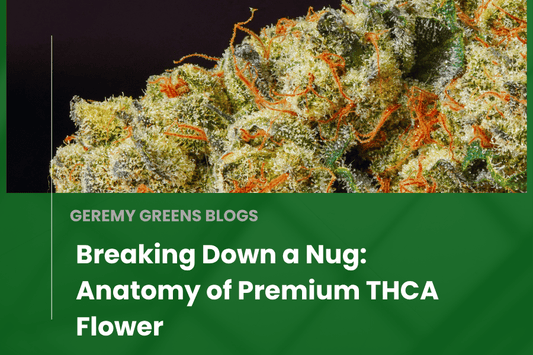
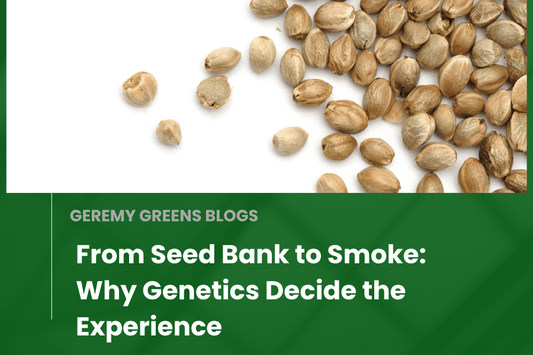
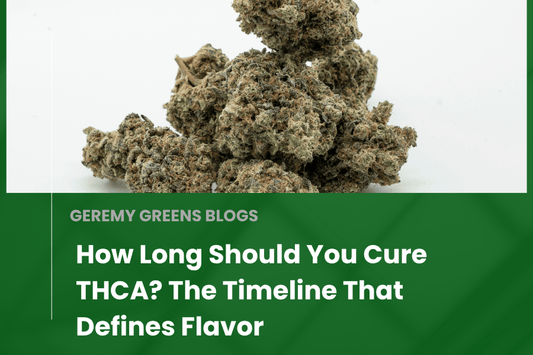



0 comments